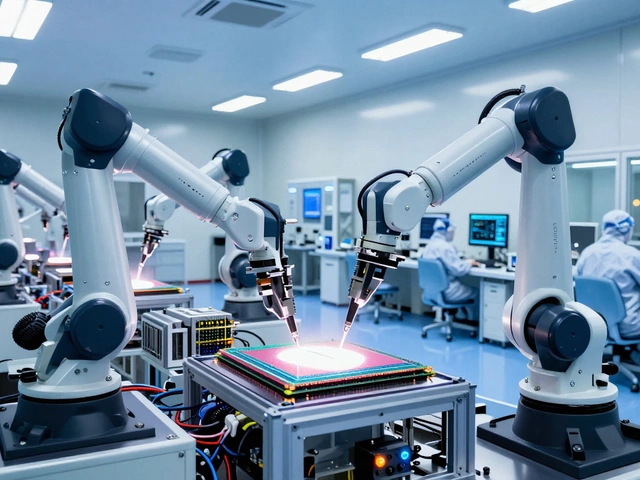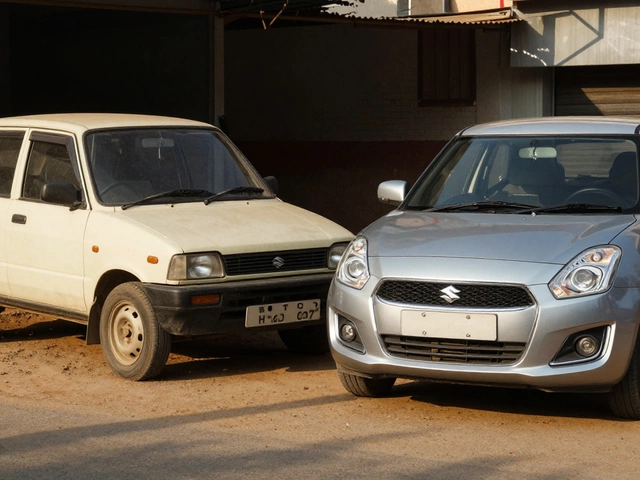Most In-Demand Products in 2025: What People Want and Why

You ever feel like some products just fly off the shelves while others gather dust? There’s often a real reason behind the madness. Sometimes, it's hype. Other times, what people want tells a way bigger story about our lives, our worries, and what we expect from tomorrow. Right now, 2025 doesn’t look a bit like 2020—at least if we’re judging by what’s flying off digital shelves and disappearing from store racks. To figure out which item is most in demand, you have to look past basic trends and see the stuff behind the numbers—the changing world we’re all living in.
What’s Driving Demand in 2025? The Real Forces Shaping Shopping Lists
Tastes change, for sure, but the biggest swings happen when tech, safety, and lifestyle collide. After the pandemic years, people thought demand for masks and sanitizers would never dip—yet as soon as vaccines became universal, those items faded fast. Instead, something else took over: convenience and control. Remote work got serious, which made home setups a top priority. Think ergonomic chairs, standing desks, bigger monitors, and plug-and-play office accessories that let people blend work with real life.
But it’s not just about work. With climate events getting more frequent and energy bills hitting new highs, people became obsessed with energy-efficient gadgets. Air conditioners with IoT functions, solar-powered chargers, and even energy-monitoring smart plugs saw demand shoot up. A report from MarketWatch in early 2025 pegged the growth of smart home tech at over 20% for the past year alone.
And don’t forget about health. Wearable tech like fitness trackers and smartwatches aren’t new, but in 2025, they come loaded with far more than step counters. Now, many offer non-invasive blood sugar monitoring, sleep stage tracking, and stress-level assessments—features that make them the right-hand man for millions keeping an eye on their everyday health. Samsung’s Q1 market share in smart wearable sales jumped to 31% this year, all because of a single new sleep-analysis feature.
Of course, demand isn’t only about stuff for our bodies and homes. Entertainment, especially cloud-based gaming and streaming tech, cracked into the top five most-searched-for category on major e-commerce sites last quarter. The metaverse didn’t turn into what Zuckerberg painted, but AR glasses and VR headsets are having their moment—mostly because they work better now, cost less, and finally have enough games and applications to make the price worth it for regular people, not just diehards.
Table: Top 5 Product Categories by Growth Rate (Q2 2025)
| Category | Growth Rate (%) | Top Product Example |
|---|---|---|
| Smart Home Tech | 22 | IoT Security Cameras |
| Wearable Health Tech | 17 | Non-Invasive Glucose Monitors |
| Cloud Gaming/Streaming Devices | 15 | AR Glasses |
| Eco-Friendly Appliances | 14 | Solar Generators |
| Home Office Gear | 12 | Standing Desks |
So, when people ask, “Which item is most in demand?” you can’t just toss out a single answer. Demand is spread—sometimes evenly, sometimes with a clear tilt—depending on which part of life people are fighting to fix.
The Winners: Product Examples Hitting Peak Demand
Some products truly stand out and keep taking the crown. Take high-performance noise-cancelling headphones. As remote work shows no signs of slowing, pretty much everyone wants to carve out quiet space at home—so demand is bursting at the seams. Sony and Bose are quietly battling over who rules this space in 2025, pushing out smarter, comfier, and longer-lasting models every six months.
Meanwhile, e-bikes are closing in on the tipping point between being a luxury and an absolute must-have. Rising fuel prices and tough city policies on car use turned electric bikes and scooters into superstars. Sales in India and Europe have more than doubled since 2022 according to Bloomberg, driven by students, gig workers, and even retirees who want a quick, sweat-free ride for daily errands. Foldable, lightweight, and strong enough to handle regular potholes—that’s the recipe that wins.
But don’t overlook boring essentials. Food processors and advanced kitchen appliances—think air fryers, instant pots, and blenders that double as soup makers—are not slowing down. With busy schedules and high food costs, speed and versatility in the kitchen rule the day. As per Statista’s survey in April 2025, automated kitchen gadget sales went up by 25% compared to last year.
Let’s not skip the real moneymaker though: high-powered power banks and portable solar panels. Even in urban pockets, people want backup power for everything from phones and laptops to mini fridges, especially in places where the electric grid plays tricks during summer heatwaves. One viral TikTok review of a 40000mAh solar charger spiked global sales by nearly 300% overnight—a reminder that word of mouth is still the kingmaker in 2025.
And for those who chase luxury, designer smartwatches with custom straps and fashion-brand collaborations are hotter than ever. People will always pay more for brands that help them show off their tech and style in one swipe. For instance, the limited edition Gucci x Apple Watch sold out in two days after hitting Asian markets this year, further fuelling this wild hybrid demand.
The big lesson? The most in demand items blend utility, status, and adaptability. If a product saves time, saves energy, and still looks good (even if it sits in your kitchen or hangs off your wrist), it’s going to find fans fast.

Tips: How Businesses and Entrepreneurs Can Tap Hot Demand in 2025
If you’re running a business, eyeing a side gig, or cracking your head for a killer startup idea, here’s what separates the winners from the “meh”: it’s all about adapting to what people want before everyone else does.
The first rule: chase data, not guesswork. Don’t just rely on gut feelings or family suggestions. Tools like Google Trends, Jungle Scout (for Amazon data), and even Pinterest’s annual trend reports offer honest glimpses of what people are searching, pinning, and buying. Track those numbers weekly and watch for sudden jumps—if searches for “energy-efficient desk fans” go up 300% in two weeks, that’s a signal worth thinking about.
Stay close to supply. Shocks in the supply chain—wars, logistics delays, or freak weather—can turn a hot product uncool fast when shelves run dry. Work on backup suppliers and keep in touch with friends in shipping or local manufacturers who can give you a heads-up if things turn sour. It’s not glamorous work but pays off big time when your competitors get stuck and you’re still in business.
Don’t ignore packaging and after-sales. Reviews show that buyers are getting pickier. They’ll pay a bit more if a product comes with easy-to-read instructions, simple troubleshooting, and guarantees that don’t require 13 steps or 10 emails. Consider little extras like eco-friendly packaging (lots of new buyers care!) and accessible customer chat support.
Here’s a wild card: look for crossover trends. For instance, electric kitchen gadgets that double as camping gear, or work headphones that act as sleep aids. People now like gear that serves more than one role because it feels like getting great value for money. That’s why grill-toaster combo gadgets and air purifiers with built-in humidity sensors are seeing wild success on platforms like Kickstarter and Indiegogo.
Finally, stay curious and ready to test. Not every hunch turns into a goldmine, but the ones who try fast, fail fast, and fix things quickly are usually the ones pitching victory stories at next year’s business conferences.
What’s Next: Future Demand and How Consumer Tastes Keep Evolving
What people want isn’t just a list—it’s almost a map of where culture, fears, trends, and hopes are heading. Today’s must-haves can become tomorrow’s jokes if tech changes direction or a big event shifts our focus.
Artificial intelligence keeps weaving into daily gear, and it’s pushing up demand for smarter everything: from shoes that track your posture to fridges that ping your phone when the milk’s running low. AI is even making customer service less of a headache, which means people expect quick answers before and after the sale. For entrepreneurs, integrating AI into basic products could be the edge that grabs the “next big thing” slot.
Eco-status is growing louder by the year. Items using recycled materials, cruelty-free tags, or carbon-neutral logistics often sell out much quicker than mass-produced rivals. Even people who used to skip “green” features now confess in surveys that eco-cred is part of their shopping brain. It’s not just because of the planet—it’s because new eco products often last longer and sport sleeker designs. Patagonia’s limited run of solar backpacks, for example, had a waitlist of 11,000 within a week of launch in April this year.
And one more trend: personal safety and self-sufficiency. Pepper sprays, portable water filtration, tiny GPS trackers for family and pets—these aren’t just for preppers anymore. Growing urban crime and more frequent natural disasters made everyday security and survival gear go from “nice to have” to urgent Christmas-list territory for millions this past year.
Can we guess exactly what will be hottest next July? Not down to the barcode. But if you’re watching what real people crave—stuff that solves new problems, mixes cool tech with basic needs, and comes with a fun or practical twist—you’ll never be far from an answer to the big question: Which item is most in demand right now? That quest for the next bestseller isn’t slowing down for anyone.





